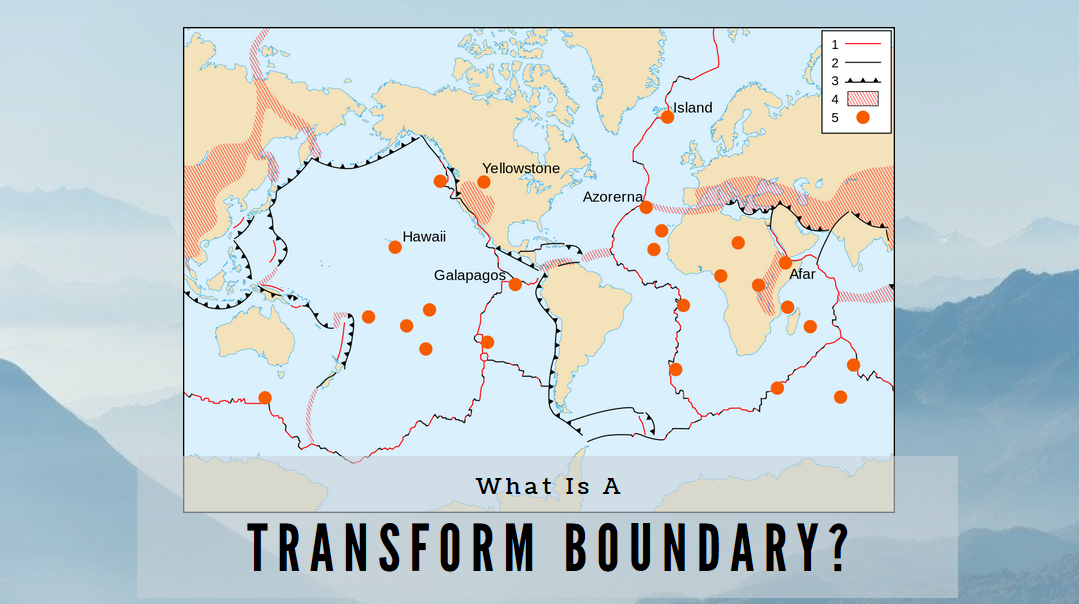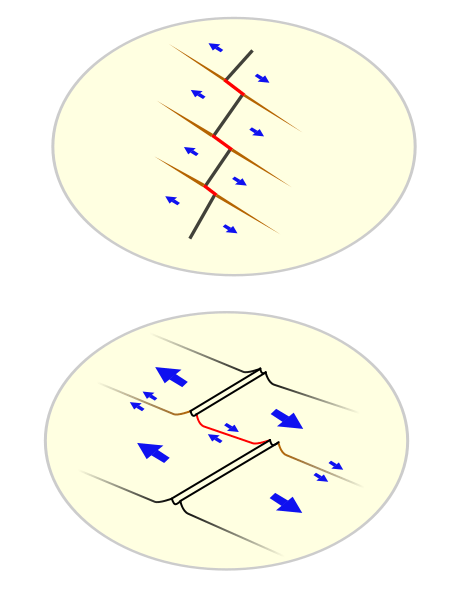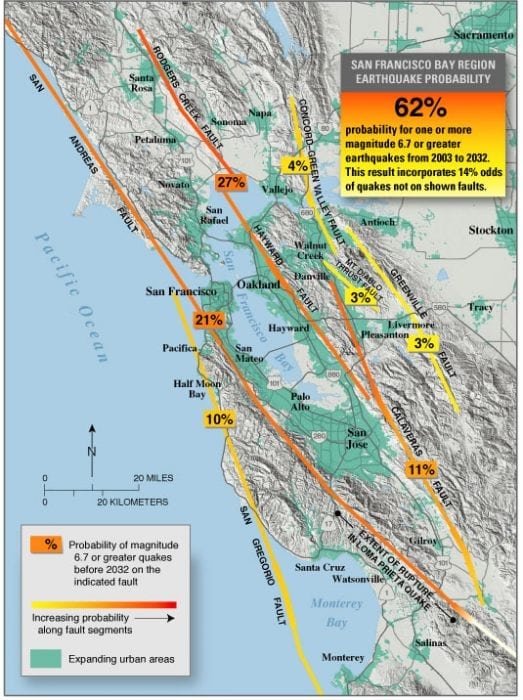
A transform boundary is a place where two of the Earth’s tectonic plates move past one another. As these plates move past one another, the two plates interact and can create cracks or faults within the surrounding area. While this is the basic definition of a transform boundary, there’s more to them than that. Let’s take a deeper, more detailed look at transform boundaries and discover how the two plates interact with one another, as well as how transform boundaries differ from other types of geological boundaries.
What Is A Transform Boundary?
Transform boundaries were hypothesized/conceived of by John Tuzo Wilson, a Canadian geophysicist, in 1965. Though Wilson was initially skeptical of the theory of plate tectonics his work became instrumental in our current understanding of it and he was also the first person to advance the theory of volcanic hotspots.
“Earthquakes traveling through the interior of the globe are like so many messengers sent out to explore a new land. The messages are constantly coming and seismologists are fast learning to read them.” — Reginald Daly
Transform boundaries are distinct from two other types of boundaries: divergent boundaries and convergent boundaries. At convergent boundaries, the tectonic plates collide with one another while at divergent boundaries the plates split apart from one another. Each of the three different boundary types can create their own unique fault type, and the movements of the plates occur at the fault location.
Transform boundaries can lead to the development of strike-slip faults, and unlike other forms of boundaries, there is only horizontal movement and no vertical movement. As the two plates slide past one another they don’t create land or destroy the land, unlike the other two types of boundaries. Since transform boundaries and transform faults neither create land or destroy the land, they are sometimes dubbed “conservative boundaries.” The movement that happens relative to these fault lines is referred to as either a sinistral movement (a movement that occurs to the left of the fault) or a dextral movement (a movement that occurs to the fault’s right).
Strike-slip Faults
Strike-slip faults are faults are faults where movement is usually either left or right, with little-to-no vertical movement. The surface, or plane, of the fault is usually vertical.
Transform boundaries can occur at many different places, but they most commonly manifest themselves at mid-ocean ridges, appearing as short faults on the seafloor. The plates don’t split apart at uniform speeds, the two plates of a transform boundary move at different speeds. The division of the plates creates rifts in the seafloor that can be anywhere from a few to several hundred kilometers in margin.
The active transform boundaries move differently at different times in their journey. The sides of the plates initially start by rubbing together, but when the seafloor spreads beyond the area that the plates overlap in the sides cease rubbing together and end up moving adjacent to one another. This creates a fracture zone, a split in the crust that extends much farther than the initial point of transform that was responsible for its creation.

Note the zig-zag appearance of fault lines. Red lines represent transform faults. Photo: Los-88 via Wikimedia Commons, Public Domain
Transform boundaries are linked to perpendicular divergent boundaries on both ends of the transform areas. This gives the boundaries a zig-zag appearance.
While most transform boundaries are found on the seafloor, some transform boundaries can indeed be found on land. These continental transforms tend to be more complex than transform boundaries found in the ocean. Unlike oceanic transform boundaries, they are influenced by the landmass around them, which creates extension or compression. The compression/extension of the transforms creates forces called transtension (extension) and transpression (compression). It is due to these forces that the coastal areas of California is pockmarked with valleys and mountainous regions. Movement across continental faults is up to 10% more intense than pure transform motion due to these extra forces.
Some examples of continental transform boundaries are the famous San Andreas fault, the Alpine fault in New Zealand, the Queen Charlotte Island fault near western Canada, the North Anatolian fault in Turkey, and the Dead Sea rift in the Middle East.
The continental lithosphere is very thick, and because of its thickness continental transform areas aren’t just cracks within the lithosphere but large zones of deformation that can run hundreds of kilometers wide. The San Andreas fault is actually just a portion of a larger fault line that runs some 100-kilometers wide. Subportions of the larger fault include the Walker Lane belt (beyond near the Sierra Nevadas) and the Hayward fault. These other areas make up a portion of the total motion from the transform.
While transform faults don’t create land or destroy it, the movement of the boundaries and the strike-slip faults can cause both shallow and deep earthquakes. These earthquakes frequently happen at the mid-ocean ridges surrounding the faults, but they very rarely create tsunamis because there is little to no vertical movement of the seafloor. These earthquakes are much more dangerous on land, accounting for some of the worst damage from earthquakes ever recorded.
Some of the most notable earthquakes caused by strike-slip faults include the San Francisco quake of 1906, the Haiti earthquake of 2010, and the Sumatran earthquakes in 2012. The 2012 Sumatran quake was recorded as a magnitude of 8.6, which is the most powerful earthquake ever logged as originating from a strike-slip fault.
Other Boundaries And Fault Types
Divergent boundaries are found where two plates are moving apart from one another, and they occur between either two continental plates or oceanic plates. The plates move by being pulled apart, thanks to the “slab pull” that happens as the plates sink into the mantle at subduction zones. Divergent boundaries lead to the creation of normal faults.
Normal faults are faults that create space between the two plates. The plates pull apart from one another, stretching the crust of the Earth apart and creating valleys. The East African Rift Zone and the Basin and Range Province (found in North America) are some of the most well-known normal faults.
“As for earthquakes, though they were still formidable, they were so interesting that men of science could hardly regret them.” — Bertrand Russel
Convergent plate boundaries are boundaries where two different plates smash into one another/converge on one another. The conversion of plates can happen between two oceanic plates, two continental plates, or an oceanic plate and a continental plate. The plate that is more dense sinks into the mantle in the subduction process.
Reverse faults also referred to as thrust faults, are where one plate/chunk/block of the crust is forced on top of another block. These faults often result in the creation of mountain ranges, and the Rocky Mountains and Himalayas are two famous examples of terrain created by reverse faults.










